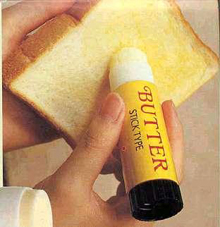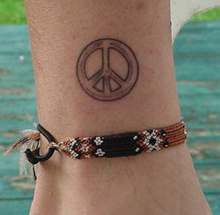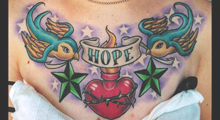 1. Google Alerts. These keep me in the know of my key areas of study. Additionally, they enable me to monitor of where my name, articles, blog posts and books show up around the world, especially on the Internet.
1. Google Alerts. These keep me in the know of my key areas of study. Additionally, they enable me to monitor of where my name, articles, blog posts and books show up around the world, especially on the Internet.
2. May I Ask Who’s Calling? For years I’ve been telling receptionists, “Yes, tell Mr. Jackson it’s The Nametag Guy.” I’m still amazed at what a great first impression this makes.
3. Answering the Phone. Again, for years I’ve answered my phone from unknown numbers: “HELLO, my name is Scott!” People love it.
4. Dates. Not just remembering them, but going out of my way to remind people of the exact dates of when specific stuff happened. Sure, I might sound like RainMan, but: specificity = credibility.
5. Pictures on each blog post. It looks prettier and increases readability. Plus I’ve got some great pictures (as you can see.) Plus few bloggers actually do this.
6. Thanks You Notes. I send them to my clients, handwritten, of course, right after we complete our project. Postcards, too. No letters. People don’t have time for letters.
7. Trash the PC. PC’s suck. And everyone knows it. Buy a Mac.
8.Music while writing. Every morning when I sit down at 6 AM to start writing, I always listen to music. I used to do it to drown out the dogs, now I just do it because of habit. But it truly fosters concentration and enhances creativity. I suggest any of Morphine’s albums. Best band ever.
9. Creativity Books. There must be hundreds of them out there, and whenever I read a new one, my mind starts coming up with great stuff.
10. Pictures. I take pictures of everything: speeches, friends, new cities I travel to, everything. Then I post them on Flickr. Then I share them with the world. Then people see me “doing what I do.” Are people seeing you do what you do?
11. Smiling for three seconds. Not just every time I walk into a room, but especially when I get on stage. Three seconds. Before I say a word. It’s amazing how that captivates an audience. Smile = silence = WOW.
12. State your fee and shut up. It’s hard to do, but it works. Even if you have to wait 10 seconds for a response.
13. Don’t sell; enable people to buy. My entire marketing philosophy is built around this idea. Thanks, Alan Weiss.
14. Ask, Why Me? To customers, to the media, to everyone. You must find out what you did right so you can repeat it in the future.
15. Even when you say no, you’re still marketing. Thanks, Seth Godin.
16. Typos. Each of my books has a few. And I really don’t care. Once I got over that, I realized: success isn’t perfection. Thank God.
17. Signing each book personally. It takes like two seconds, and people remember it forever. Plus they can get a higher bid on Ebay.
18. Be funny early. In conversation, in books, in articles, in speeches, whatever. Humor disarms people and lubricates their digestion of your message.
19. My Pleasure. What can I say? I worked at the Ritz. I can’t even bring myself to say, “You’re welcome.” My Pleasure just sounds better.
20. Double sided business cards. Depending on the nature of my conversation with someone new, I’ll either give that person my business card backside up (the side with the nametag) or front side up (the side with the books). Two very different purposes for each one.
21. I don’t know what that means. This sentence shows that you’re truly listening, that you care to learn more and that you don’t know everything. People love to hear it. Try it. It works!
22. I need your help. Another great sentence that appeals to the helpful nature of service professionals. By starting a conversation in this way, you are 10 times more likely to get better service.
23. Emailing complete strangers back in 2 minutes. It’s no big deal to me, but for some reason, it is to them. Cool.
24. Breathing exercises. I do them 10 times a day. In through the nose for 4 seconds, hold for 7, out for 8. Repeat 4 times. See ya, stress. And thanks, Dr. Andrew Weil.
25. Lists. Easier for me to write, easier for you to read, easier for everyone to remember. Viola!
26. Bold face, short sentences, short paragraphs, line breaks, italics. It’s amazing how many writers don’t utilize key structural stuff like this. It sure makes the writing more readable.
27. Starting sentences with words like “and” & “because.” Conversational. Breaks the rules of grammar. Hey, screw spell check!
28. Eye contact with specific people in an audience for 1-3 seconds. Makes them feel like you’re talking to them personally. Which you are. Thanks, Toastmasters.
29. One extra second. Of eye contact when you shake someone’s hand, say hello or say goodbye. Thanks, Bill Clinton.
29. Delicious, digg and “email this to a friend.” Major web traffic increasers. (See bottom of post)
30. Free books. I have no idea how many books I’ve sold, and frankly, I don’t care. All I know is, I’ve given a LOT of them away for free, and never regretted doing it a single time. It makes people’s days. Especially if you sign it. And it’s gotten me a lot of business and even more publicity.
31. Autographs. Speaking of signing books, check this out: whenever I don’t know what to write, I sign my books, “You’re a great kisser!” or “Thanks for saving my life!” You should see the reactions I get. Especially from men. More importantly, you should see how many other people my readers then show their books to. Nice.
LET ME ASK YA THIS…
What little things do you do that make a big difference?
* * * *
Scott Ginsberg
Author/Speaker/That Guy with the Nametag
www.hellomynameisscott.com
add to del.icio.us * digg it! * email this post
 So I just came across a book from 1959 called Ideas That Became Big Business, by Clinton Woods.
So I just came across a book from 1959 called Ideas That Became Big Business, by Clinton Woods. 
 1. Does a lower fee make you more affordable, or less attractive?
1. Does a lower fee make you more affordable, or less attractive?
 My girlfriend drives a pink car. It’s pretty much the sweetest ride you’ll see on the road.
My girlfriend drives a pink car. It’s pretty much the sweetest ride you’ll see on the road.  Tattoos are another great example.
Tattoos are another great example.  Another example: what if someone gets the word “hope” tattooed across her chest? Think she’d slump around all day with woe-is-me posture and depressed eyes?
Another example: what if someone gets the word “hope” tattooed across her chest? Think she’d slump around all day with woe-is-me posture and depressed eyes? 1. Google Alerts. These keep me in the know of my key areas of study. Additionally, they enable me to monitor of where my name, articles, blog posts and books show up around the world, especially on the Internet.
1. Google Alerts. These keep me in the know of my key areas of study. Additionally, they enable me to monitor of where my name, articles, blog posts and books show up around the world, especially on the Internet. I guess every profession is different.
I guess every profession is different. When I submit a book manuscript to my editor, I hope she uses up an entire red Sharpie marking up my draft.
When I submit a book manuscript to my editor, I hope she uses up an entire red Sharpie marking up my draft.